Biking tribes: Uncovering intracultural audiences & insights within the cycling community
The delivery of culturally relevant or culturally sensitive insights is an integral component of successful insights work. We tend to discuss cultural relevance with our clients as the identification of attitudes and behavior that are influenced by socio-economic, structural, demographic or linguistic factors, usually found via comparison across languages, cultures and geographies.
But what of intracultural relevancy? How do you find the nuanced clusters or attitudes that exist within broader, but still specialized, audience groups that already exhibit a specific set of cultural behaviors?
An integral part of this process is the revealing of unanticipated sub-groups – those smaller clusters of people, whose discovery and nurturing can offer brands a significant competitive advantage. Social intelligence, and Audiense in particular, has proved an invaluable tool for this purpose. For example, in a previous project, we uncovered a small segment of “Makers” – young people creating high quality, artisanal craft products – a group that offered new opportunities for product development and bespoke targeting for our client.
We decided to look at cyclists as our specialized audience group. There are a few reasons for this:
- Obvious clusters exist and are well-catered for, so finding the unanticipated should prove as challenging as an FTP test.
- The cycling culture is rich and varied, with a broad suite of disciplines each with their own sets of cultural quirks: Coffee, tight lycra, loose lycra, hurt, hills, indoor racing, walking on cumbersome shoes, peanut butter, hand signals, collar bones.
- It’s an incredibly innovative space – can social point us towards the smaller-scale innovators, creators of hacks and the genesis of the next big things in cycling?
The process
Selecting the universe
The first step was to choose the universe. We considered selecting people in the UK with “Any Interest” in cycling, but then decided to make the outputs more directly relevant to suppliers by rooting it in an active group of people who purchase or engage with brands operating within the space. So, by refining the unlooked at followers of the main clothing, bike and component brands, we were able to get a more specialist universe as a starting point.
The segmentation
The initial segmentation shown here made intuitive sense; the groups are largely defined by their favored cycling discipline. Interestingly though, when looking under the bonnet and exploring each group’s visual and textual social content, we were able to tease out differences where discipline was not the defining segment parameter. For example, CCers and Casual Weekenders are predominantly roadies, but CCers were defined almost exclusively by their tendency to follow clubs, pros and consumer specialist media. Their own posts featured group rides, shared kit and referenced sportives and various racing formats. In contrast, Casual Weekenders were also defined by their interest in other sports, their cycling related content was more sporadic and significantly less structured – club kits, for example, were not visible.
The remaining segments were defined by their disciplines (or lack thereof in the case of the Urban Peddlers).
But where is the Gravel Tribe? The freewheeling, adventuring, not quite baggy, traffic avoiding spirits of the wilderness. Gravel is arguably still nascent (digitally at least) in the UK. Each segment reveals a propensity to engage with gravel related accounts and content, but the Gravel tribe do not naturally fall out as a clear, self-contained segment yet. Reasons for this are open to conjecture (plotting routes is tricky, they lack the open spaces), but we had a quick look at the US (the birthplace of Gravel) and found a clear segment of people clustered around dedicated media, race accounts (e.g. Unbound) and the superstars of the sport. All this implies there is an opportunity to foster and nurture Gravel culture in the UK.
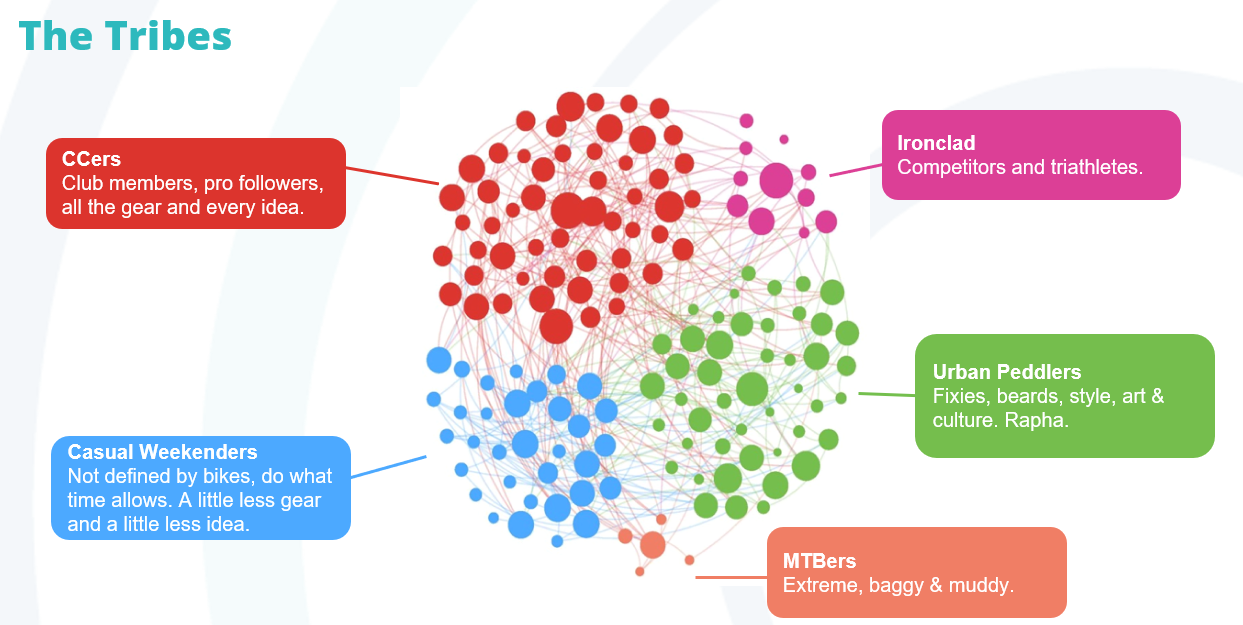
So, as no unanticipated segments emerged at the first pass, we decided to investigate the CCers a little further in our search for intracultural insights or segments.
Predominantly young males, this is a segment interested in outdoor sports, weather, sustainability, nutrition (especially coffee) and travel.
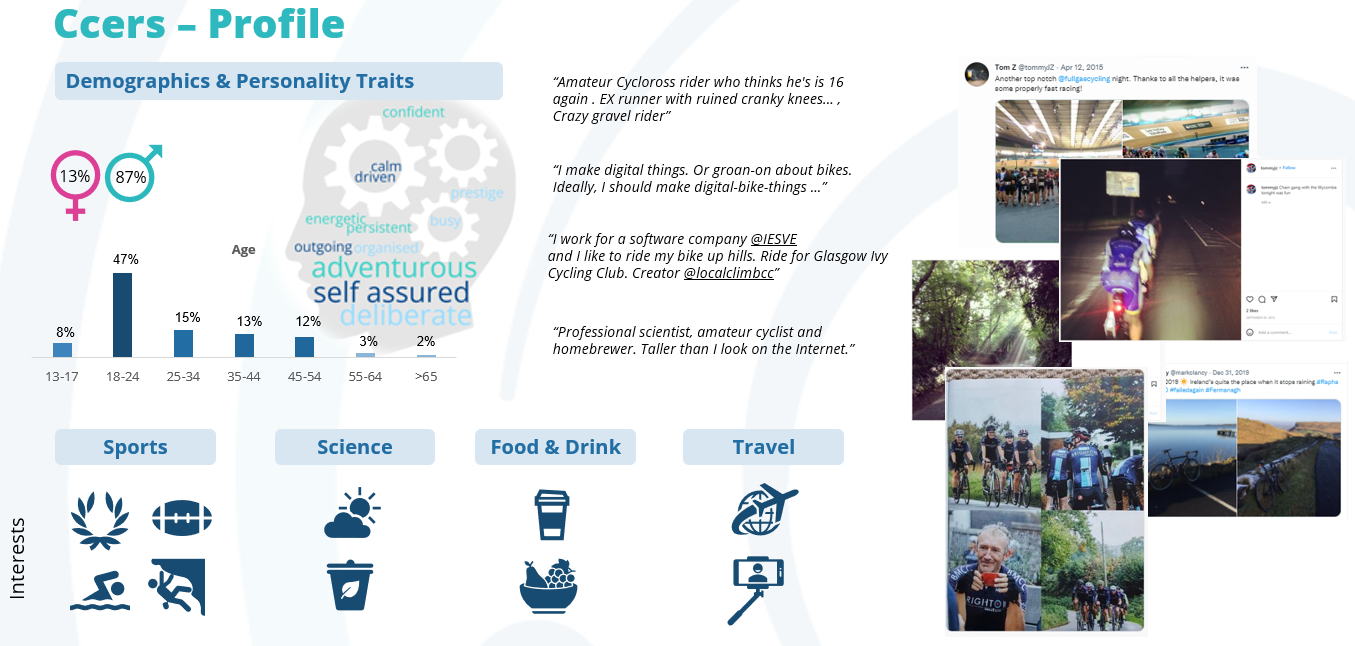
Their favored brands comprise larger craft beer and specifically Islay single malts(!), specialist natural nutrition and energy solutions (beetroot and coconut water). We see sustainability and ethical considerations permeate their clothing and banking preferences (Patagonia and Triodos). Dedicated cycling insurance brand Laka has a strong foothold within this segment.
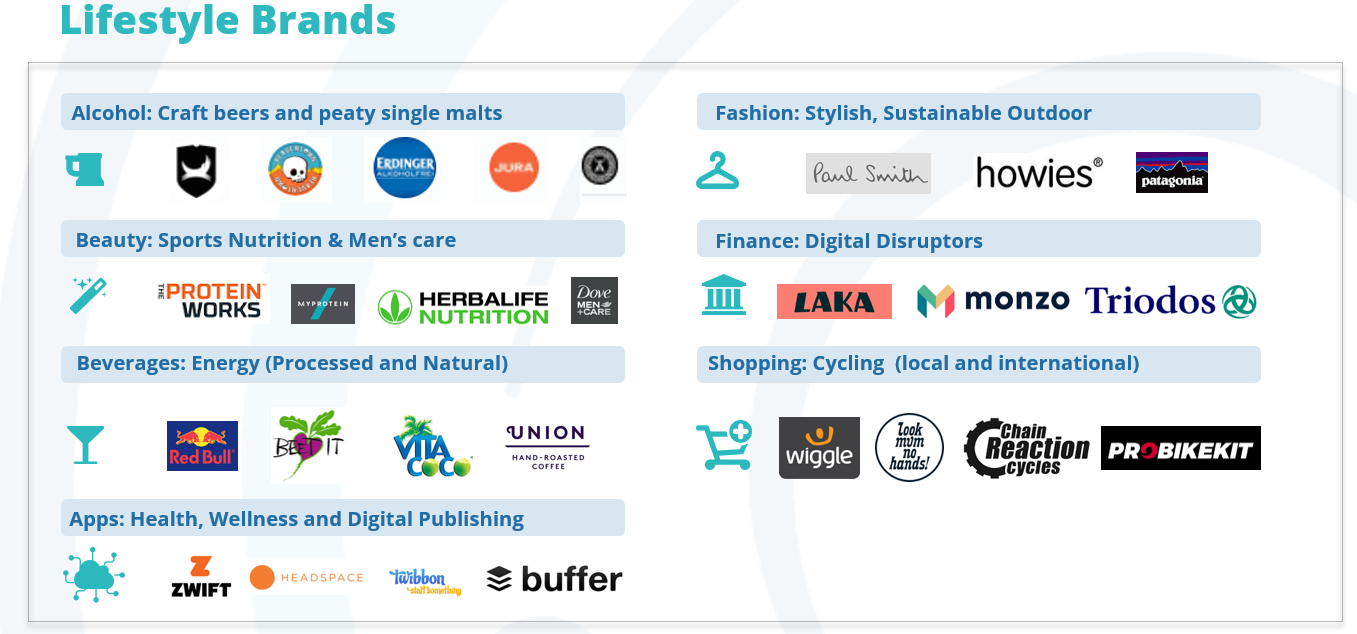
And what of the cycling brands? How did they perform against each segment? We looked at a few of the clothing brands whose followers comprised our universe. Again the results were reassuringly intuitive.
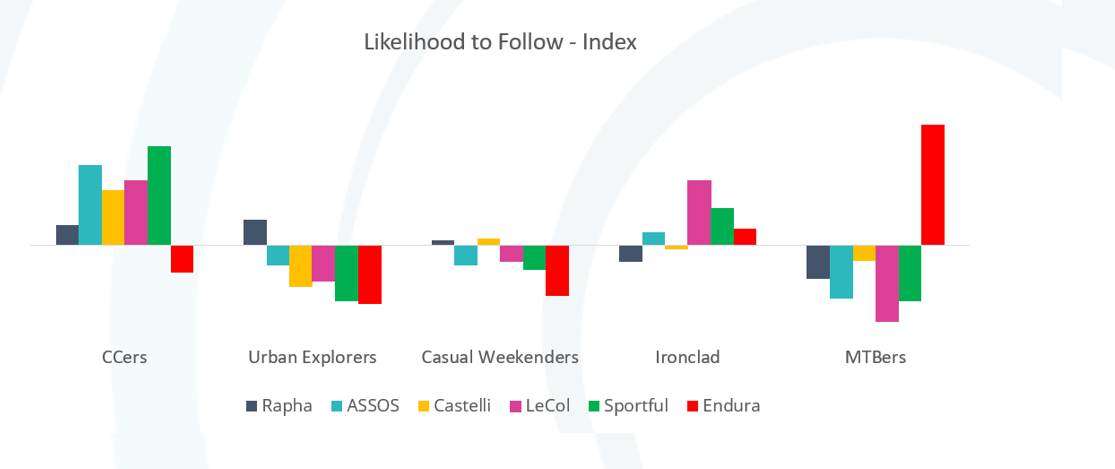
Rapha owns the Urban Explorers with their dedicated range of off-bike fashion, while Endura indexes most strongly against the MTBers. No alarms and no surprises though.
Revealing the unanticipated
We were still on the lookout for new segments, so we tried something else: looking at Interconnectivity within the CCer segment as opposed to Affinity. Rather than deploying the algorithm to cluster according to shared interests, we clustered according to who is connected to whom.
The results can be seen here:
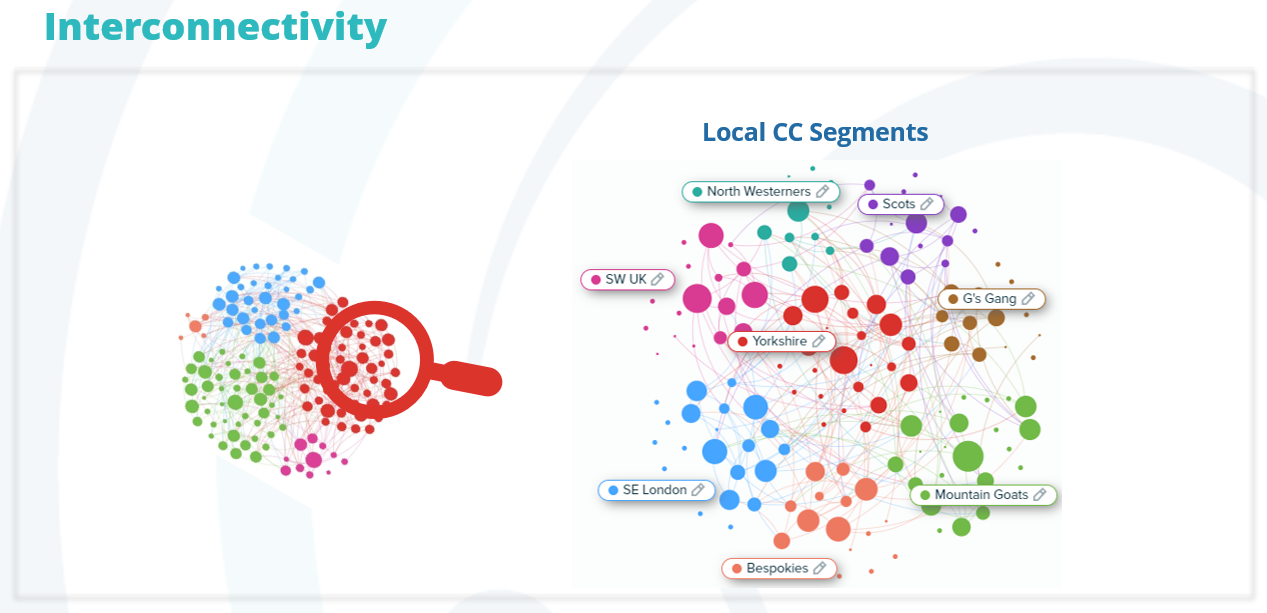
Our segmentation threw up some anticipated results, whereby seven of the segments were defined by their regional splits – a function of clubs and their members connecting with one another. Key to brands is finding the gatekeepers to these regional segments and the people or accounts that connect them all. These are the micro-influencers.
Just as we were profiling the last few and beginning to bonk*, we found a couple of groups we’d not anticipated:
- Mountain Goats: Hill climbers! The masochistic tribe of lightweight individuals on lightweight bikes who travel around the UK surging up the toughest medium length climbs that the country has to offer. This is a very well-established UK tradition and one that certainly warrants its own segment.
- Bespokies: People not connected regionally, but by a passion for bespoke bike creation. They are followers of accounts such as The Bicycle Academy, Bespoked UK and Charge Bikes. Are these people the lead users? The consumer innovators and just possibly the creators of the next big hack, the next big frame type or the next big discipline? Regardless, they are a segment that component manufacturers in particular should be nurturing.
*The bonk is a funny name for a terrible feeling, when suddenly there's nothing left in the tank, the legs turn to jelly, and getting to the finish or just back home becomes an altogether supreme effort of will.
Digging into larger, generic universes and exploring how internal clusters are linked can add great value to your brand. By going beyond the topline, surface-level information to tease out the micro-communities and intracultural audiences you will gain an invaluable advantage against your competitors. As shown in our research, target audiences are never static; they shift and change with the trends that they follow or create. Pinning them down can be challenging, but it will pay off in the long run as it helps focus marketing efforts and product development. Ultimately, identifying these clusters at an early stage and tracking their emergence through deep dive audience analysis can ensure your brand, products and services stay empathetic, relevant and appealing.
Convosphere is a social-first market research agency specializing in the use of global social data to answer a wide range of strategic business questions. Through human-led social listening and data analysis across 100+ languages, we deliver deep cultural insights that bring our global clients closer to local audiences.
While this research was undertaken in the UK, we can replicate it and any associated social intelligence work across any market or language.






